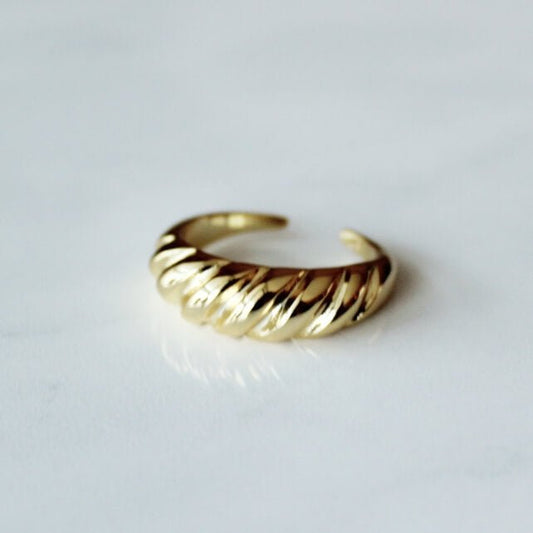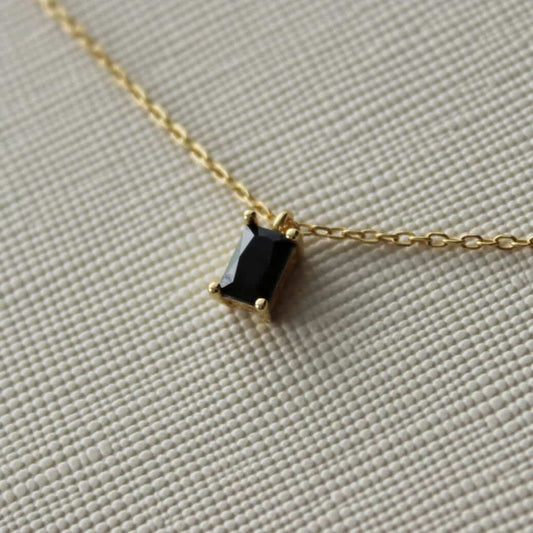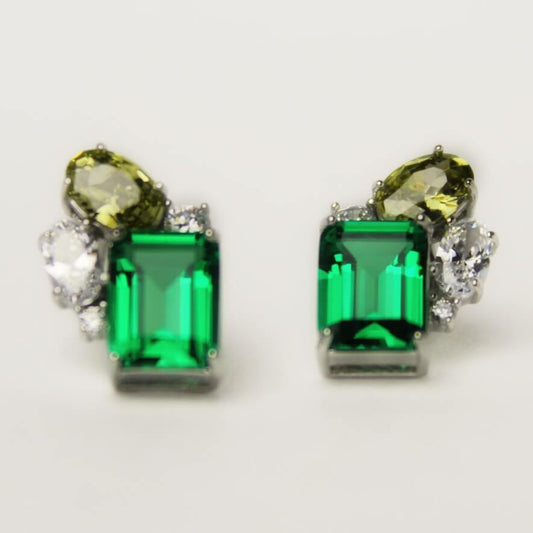If you're a fan of diamonds and curious about where the biggest diamonds in the world are found, you might be surprised to learn that they're not all in the most famous diamond-producing countries such as South Africa, Russia, or Australia. In fact, some of the world's largest diamonds have been discovered in cities that aren't often associated with diamond mining.
Here are four cities you may have never heard of that house some of the biggest diamonds in the world.
Lesedi La Rona Diamond
Location: Sefophe, Botswana
Did you know that Botswana is one of the largest diamond producers in the world? It's true! And one of its most productive mines is called Sefophe. In 2015, the biggest diamond ever found was discovered at the Karowe mine in Sefophe. It weighed a whopping 1,109 carats and was named Lesedi La Rona, which means "our light" in the Tswana language. It was sold in 2017 for $53 million, making it one of the most expensive diamonds ever sold!
Botswana is a landlocked country located in Southern Africa and has a population of approximately 2.4 million people. Diamonds were first discovered there in the 1960s, and since then, the country has become one of the world's leading producers of high-quality diamonds. Diamonds account for about 70% of the country's export revenue and 25% of its GDP, making the diamond industry crucial for Botswana's economic growth and development.
However, the diamond industry in Botswana has not been without controversy. During the 1970s and 1980s, the country was involved in a border dispute with neighboring South Africa, which resulted in the closure of the South African border and severely impacted Botswana's diamond exports. Botswana's government negotiated new trade agreements with other countries, which helped to stabilize the diamond industry.
Another issue that has plagued the diamond industry in Botswana is the problem of blood diamonds. These are diamonds that are mined in war zones and sold to finance armed conflicts. To combat this problem, Botswana has implemented a number of measures to ensure that its diamonds are ethically sourced. The government established the Diamond Trading Company Botswana, which is a joint venture between the government and diamond mining companies. This company is responsible for sorting, valuing, and selling rough diamonds produced in Botswana.
Additionally, the government has established the Diamond Hub, a center for diamond trading, manufacturing, and marketing. This hub aims to promote transparency and ethical practices in the diamond industry. Despite challenges such as these, the diamond industry in Botswana continues to thrive.
One of the most exciting things about Botswana's diamond industry is its royal family, which includes the current president, Mokgweetsi Masisi. The royal family has been a strong advocate for the diamond industry and has worked to ensure that the benefits of diamond mining are shared with all Botswana citizens.
In conclusion, Botswana's diamond industry plays a vital role in the country's economy and has a rich history that has not been without controversy. The discovery of the Lesedi La Rona diamond underscores the importance of Botswana in the global diamond industry. The country's commitment to ethical sourcing and sustainable mining practices ensures that its diamonds are among the most sought-after in the world.
The Cullinan diamond
Location: Cullinan, South Africa
Although South Africa is famous for its diamond mines, there's a small town called Cullinan that holds a special place in diamond history. The town located in the Gauteng province of South Africa is known for the discovery of one of the largest diamonds ever found - the Cullinan diamond.
In 1905 a miner at the Premier Mine in Cullinan stumbled upon a massive diamond, which weighed a staggering 3,106 carats. This diamond was named after the mine's owner Sir Thomas Cullinan and is still considered one of the most significant diamond discoveries in history.
The Cullinan diamond was then transported to London where it was cut into several smaller pieces. The largest of these pieces, called the Great Star of Africa weighs 530 carats and is set in the Sceptre of the British Crown Jewels. The second-largest piece called the Lesser Star of Africa or the Second Star of Africa, weighs 317 carats and is set in the Imperial State Crown. Both these pieces are displayed in the Tower of London and tourists from all over the world come to see them.
While the discovery of the Cullinan diamond is undoubtedly a remarkable feat the diamond industry has also been associated with unethical practices such as the trade of blood diamonds. Blood diamonds are diamonds that are mined in war zones and sold to finance armed conflict against governments. This practice has caused widespread human rights abuses and environmental damage in many countries particularly in Africa.
However, in recent years there has been a growing awareness of the importance of ethical diamond sourcing. The Kimberley Process Certification Scheme was established in 2003, which aims to ensure that diamonds are sourced responsibly and do not contribute to conflict. The scheme requires that all diamond shipments be accompanied by a certificate of origin, and each shipment is monitored to ensure that it does not contain conflict diamonds.
Additionally, the British Royal Family has been a strong advocate for ethical diamond sourcing. Prince Harry has been particularly vocal about the issue and has worked to promote ethical practices in the diamond industry. In 2018, he partnered with the Botswana government to launch a new initiative called the Queen's Commonwealth Canopy, which aims to protect forests and promote sustainable development in countries that produce diamonds.
The discovery of the Cullinan diamond is a remarkable story that highlights the incredible history of the diamond industry. However, it's important to recognize that the diamond industry has also been associated with unethical practices such as the trade of blood diamonds. Thankfully, the Kimberley Process Certification Scheme and the efforts of the British Royal Family have helped to promote ethical diamond sourcing and ensure that the benefits of diamond mining are shared with local communities in a responsible and sustainable manner.
The Jubilee Diamond
Location: Mirny, Russia
Mirny is a fascinating city in Siberia, Russia, known for being home to one of the world's largest diamond mines - the Mir mine. This mine is truly enormous and can even be seen from space! It's also the location where one of the largest diamonds ever found was discovered - the Jubilee Diamond.
In 1980, miners at the Mir mine found the Jubilee Diamond, which weighed an incredible 245 carats. While it was eventually cut into smaller pieces, its size remains impressive to this day. The diamond was named in honor of the 75th anniversary of the founding of the Soviet Union.
Diamond mining in the region began in the 1950s and has been a vital part of the economy in Siberia ever since. However, the history of diamond mining in Russia has not been without controversy. During the Soviet era, diamond mining was heavily controlled by the government, and workers were often forced to work in harsh conditions.
Today, the diamond industry in Russia is still largely controlled by a few major companies, and the industry is not without ethical concerns. Like many diamond-producing countries, Russia has struggled with the issue of blood diamonds. Blood diamonds are diamonds that are mined in war zones and sold to finance armed conflict against governments.
The issue of blood diamonds in Russia came to light during the 1990s, when rebel groups in Angola were using diamond sales to finance their war efforts. Many of these diamonds were smuggled into neighboring countries, including Russia, and sold on the global diamond market. In response, the international community developed the Kimberley Process Certification Scheme, which aims to ensure that diamonds are ethically sourced and conflict-free.
Despite these concerns, the diamond industry remains a crucial part of the Russian economy, and the Mir mine is a significant contributor to this industry. The mine has undergone several changes over the years, including a temporary closure in the 2000s due to falling diamond prices.
Overall, Mirny is a city with a rich history and a vital role in the global diamond industry. While there have been ethical concerns surrounding diamond mining in Russia, steps are being taken to ensure that diamonds are ethically sourced and conflict-free. The discovery of the Jubilee Diamond at the Mir mine is just one example of the incredible treasures that can be found in this region, and it serves as a testament to the hard work and dedication of the miners who have worked in this industry for decades.
Star of Sierra Leone
Location: Sierra Leone, West Africa
Let's talk about Sierra Leone, a country that has produced some of the largest diamonds in the world, including the magnificent Star of Sierra Leone.
The Star of Sierra Leone was discovered in 1972 and weighed a jaw-dropping 969 carats. To put that into perspective, that's more than twice the size of the Cullinan diamond! The diamond was sold for a whopping $2.5 million, and was later cut into 17 smaller pieces.
Unfortunately, the Star of Sierra Leone was also at the center of controversy during the Sierra Leone Civil War. The diamond was stolen, along with many other diamonds, and was believed to have been sold to fund the war. However, the diamond was eventually recovered and returned to the government.
Sierra Leone's diamond industry has a complicated history when it comes to ethics and ownership. In the past, the diamond mines were controlled by foreign companies, and the profits were not being shared fairly with the local communities. This led to a civil war that lasted over a decade, and the diamond trade played a significant role in funding the conflict.
Thankfully, efforts have been made to improve the ethics and ownership of Sierra Leone's diamond industry. The government has taken steps to ensure that diamond mining is conducted in an environmentally responsible way, and that the profits are shared fairly with the local communities.
Despite its controversial past, Sierra Leone remains a popular destination for diamond enthusiasts and travelers alike. The country is home to beautiful beaches, vibrant culture, and of course, the allure of discovering the next big diamond.
In conclusion, the world of diamond mining is full of surprises. While some cities and countries are well-known for their diamond production, others may not be as recognized, yet have produced some of the most valuable and rarest diamonds in the world. From the Star of Sierra Leone in West Africa to the Jubilee Diamond in Siberia, each of these diamonds has its own unique story and history.
It's fascinating to think that a city like Cullinan, South Africa, which may not be as famous as Johannesburg or Cape Town, is the site of one of the largest diamonds ever discovered. The fact that the Cullinan diamond was cut into several smaller pieces and is now part of the British Crown Jewels only adds to its story.
These cities and countries have not only made a significant contribution to the diamond industry, but they've also made their mark in history. And who knows, with new advancements in technology and exploration, the next big diamond discovery could be just around the corner.







4 comments
The Russian city really surprised me! Great article!
Interesting to know about these cities. Some of them never heard of them as well. Thank you for sharing!
This was an interesting read! I’ve never heard of the diamond industry in Botswana.
Botswana! I learned something new. Thanks for sharing!